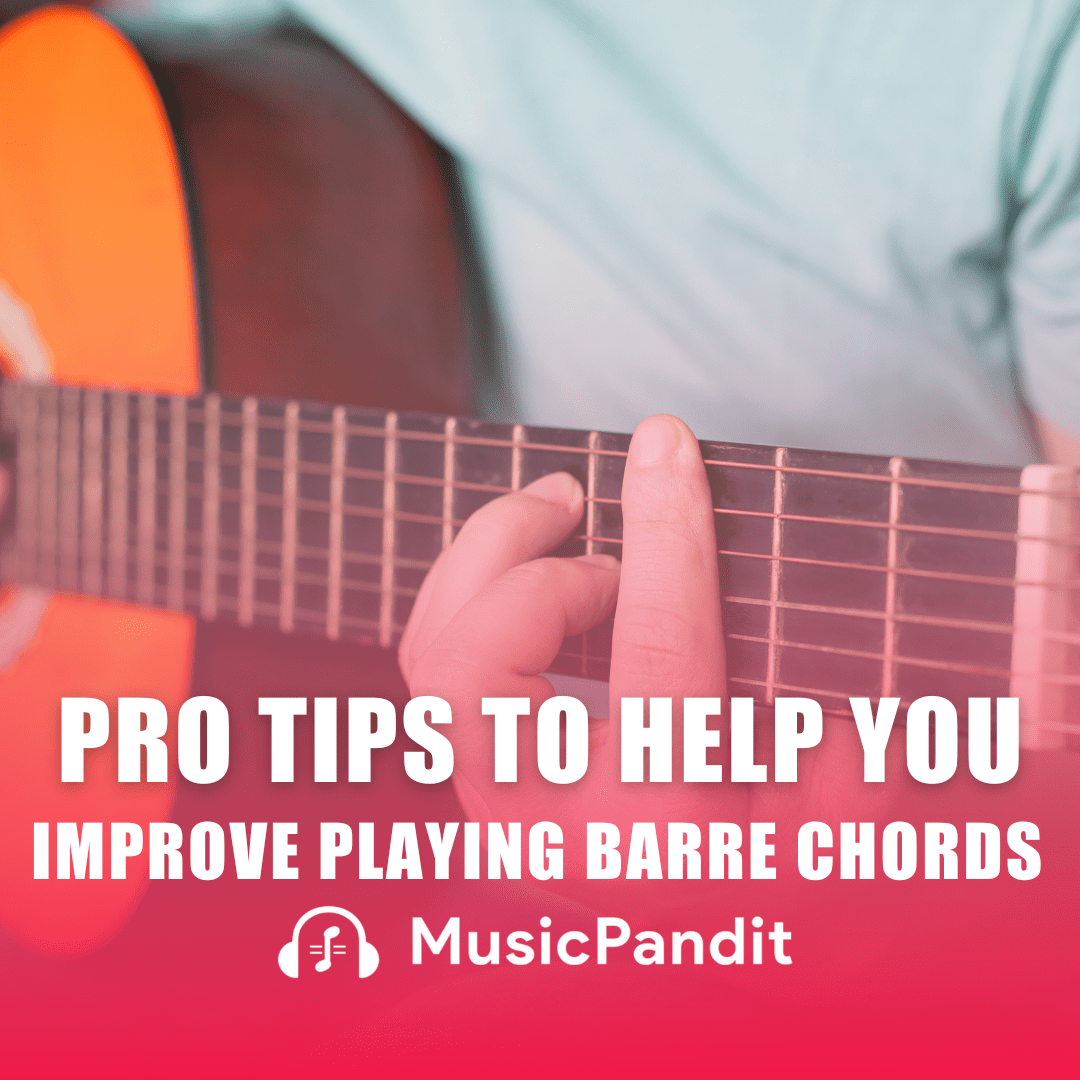What makes singing such a beautiful and expressive art form that has the power to move hearts and stir emotions? Well, first of all singers have to be proficient wherein they understand the mechanics of their voice and how it produces different tones. Another crucial aspect of singing is applying the right vocal techniques. When we talk about techniques, one of the important elements is the concept of vocal registers.
In this article, we will deeply discuss the three main or primary vocal ranges used in singing — Chest, Head, and Mix. As you read through the points you should gain a thorough understanding of these registers, their traits or characteristics, and benefit from exercises on how to transition between them effectively.
The Human Voice and Its Registers
We have to say that the human voice is a remarkable instrument. It is capable of producing a wide range of pitches and tones. How is it done? Well, it is a result of the interaction between the vocal cords, the vocal tract, and the resonating cavities in our head and chest.
In any case, we will not deep dive into the science aspect and look at it in a more general sense. If you are looking for a definition though, a vocal register is a distinct range of tones in the human voice that is produced by a particular vibratory pattern of the vocal folds. In other words, we can say that the vocal registers are the different modes or “gears” that the voice operates in, each with its unique characteristics.
Therefore, understanding and mastering these registers is fundamental to becoming a skilled singer.
Chest Voice
Chest voice or the “chest register,” is the lower range of the human voice. It is also most used by people when speaking. This is also where most singers begin their vocal journeys, as it is the most natural and comfortable register.
When singing in a chest voice, the vocal cords are usually thick and relaxed. The vibrations are predominantly felt in the chest area. Typically, a voice in this register will sound warm, full, and rich.
Characteristics of Chest Voice
- Low to mid-range pitches.
- Full and resonant sound.
- Vibrations are felt in the chest.
- Thick vocal cord engagement.
- Often used in powerful, emotive singing.
This register is commonly used in singing songs that require strength and depth, such as ballads and rock anthems. It provides a strong foundation for singing and is essential for building vocal power.
Head Voice
The higher counterpart to the chest voice is the head voice, or “head register.” It is a lighter and more agile register that allows singers to reach higher notes with ease.
When you sing in head voice, the vocal cords tend to become thin and stretched, and the vibrations are felt in the head and upper resonating cavities. The sound produced is often associated with a clear and ethereal quality.
Characteristics of Head Voice
- High-pitched notes.
- Light, clear, and airy sound.
- Vibrations are felt in the head.
- Thin vocal cord engagement.
- Used for higher, more delicate melodies.
Head voice is commonly used for singing high notes, falsetto, and for achieving a light and airy quality in your vocal performance. It is crucial for achieving vocal agility and versatility.
Mixed Voice
Talking about the mixed voice, it is a sound that is produced by blending both chest and head registers. It occupies the middle range of your vocal range. It serves as a bridge between the lower chest voice and the higher head voice. This register allows for smooth transitions between the two extremes and offers a balanced, well-rounded sound.
Characteristics of Mixed Voice
- Middle to upper-middle range notes.
- Balanced, resonant sound.
- Vibrations can be felt in both the chest and head.
- Combination of thick and thin vocal cord engagement.
- Versatile register for various musical styles.
The mixed voice provides singers with the ability to seamlessly navigate their vocal range, making it a valuable tool for singing a wide variety of songs. It allows for a more controlled and balanced approach to both high and low notes.
Register Transitions – How to Move From One Register to Another
It is crucial for singers to develop the ability to transition between vocal registers. Here’s a breakdown of how to move from one register to another effectively:
Chest to Head Voice: If you want to transition from chest to head voice, you will have to start by thinning out your vocal cords as you ascend in pitch. You can imagine your voice “flipping” or “breaking” into the higher range. You will need to practise scales or vocal exercises that cover this transition zone until it becomes a smooth and controlled process.
Head to Chest Voice: This is essentially the reverse of the previous process. To transition from head to chest voice, start in your head voice and gradually add more weight and thickness to your vocal cords as you descend in pitch. Remember, you have to maintain vocal control and avoid any abrupt or jarring changes.
Chest to Mix Voice: To move from chest to mix voice, you have to find the balance between the two registers. As you ascend in pitch you should gradually thin out your vocal cords while maintaining some of the chest voice’s resonance. This will create a smooth transition into the mix voice.
Mix to Chest Voice: When you are transitioning from mix to chest voice, it involves adding more thickness to your vocal cords as you descend in pitch. Maintain some of the mix’s balanced resonance while gradually increasing the depth of your vocal sound.
Head to Mix Voice and Vice Versa: Transitioning between head and mix voice is a valuable skill for achieving a seamless and well-rounded vocal performance. Practice moving smoothly between these registers to expand your vocal capabilities.
Vocal Register Comparisons
To help you better understand the distinctions between the three primary vocal registers, we will compare them across various aspects:
Range
| Chest Voice: Low to mid-range pitches. |
| Head Voice: High-pitched notes. |
| Mix Voice: Middle to upper-middle range notes. |
Sound Quality
| Chest Voice: Full and resonant. |
| Head Voice: Light and clear. |
| Mix Voice: Balanced and versatile. |
Vibrations
| Chest Voice: Felt in the chest. |
| Head Voice: Felt in the head. |
| Mix Voice: Felt in both the chest and head. |
Vocal Cord Engagement
| Chest Voice: Thick vocal cord engagement. |
| Head Voice: Thin vocal cord engagement. |
| Mix Voice: Combination of thick and thin vocal cord engagement. |
Usage
| Chest Voice: Used for powerful, emotive singing. |
| Head Voice: Used for higher, delicate melodies and falsetto. |
| Mix Voice: Versatile for various musical styles. |
Once you know these differences, you will be able to easily identify the appropriate register for different parts of a song. This will further enable you to express a wide range of emotions and dynamics in your singing.
Exercises for Developing Vocal Registers
If you want to master the three vocal registers, you need consistent practice and exercises that target each one specifically. We have listed down some vocal exercises to help you develop your chest, head, and mix voices. Let’s look at them below.
Chest Voice Exercises
Lip Trills: Perform lip trills while ascending and descending scales. You can start with a comfortable mid-range note. You should focus on maintaining a full, resonant sound in your chest voice.
Descending Slides: For this, begin with a higher note in your chest voice and gradually slide down while keeping a consistent, connected sound.
Chest Voice Sirens: In this exercise you will need to create a siren-like sound starting in your chest voice and then move up to your highest chest voice notes.
Head Voice Exercises
Octave Jumps: This exercise involves jumping between notes one octave apart in your head voice. Practising this will help you develop control and accuracy in your upper range.
Head Voice Scales: Incorporate ascending and descending scales within your head voice range. Here you should focus on producing a light and airy tone.
Head Voice Sirens: Similar to chest voice sirens, you will need to create a siren-like sound that starts in your head voice and then move up to your highest head voice notes.
Mixed Voice Exercises
Mixed Voice Scales: The exercises involve singing scales that enable you to transition smoothly between your chest and head voices. This should result in a balanced mix. Start with a comfortable mid-range note, then gradually ascend and descend. You need to emphasise on the evenness of your tone throughout the exercise.
Vocal Fry into Mix: Here you begin with vocal fry, a low, crackling sound and then, transition smoothly into your mix voice by gradually increasing the pitch and maintaining a clear and resonant tone. This exercise helps build control and coordination between your registers.
Staccato Mix: You can practise singing short, separated notes (Staccato) in your mix voice. This exercise enhances your ability to maintain a balanced sound and switch between registers quickly.
Importance of Vocal Registers in Singing
So why do you think vocal registers matter in singing? Well, understanding and mastering vocal registers is crucial for singers for several reasons. We will discuss them briefly here.
Vocal Health: As you properly navigate through your vocal registers it helps in preventing strain and damage to the vocal cords. If you sing in the appropriate register for a given range reduces the risk of vocal fatigue and injury.
Versatility: Once you develop proficiency in all three vocal registers you will be able to perform a wider variety of songs. Versatility is one essential trait for singers / artists who want to explore different musical genres and styles.
Expressiveness: The different registers are usually associated with unique emotional qualities. When a singer switches between registers it empowers him/her to convey a broad range of emotions within a song, enhancing their expressiveness.
Vocal Agility: As you master vocal registers your vocal agility and control also improves. Singers are able to tackle challenging melodies, high notes, and dynamic shifts with ease.
Vocal Blending: Once you know how to transition between vocal registers you will be able to deliver a more seamless and balanced vocal performance. This skill is also important in harmonising with other singers especially in a group singing or choir.
Practical Application of Vocal Registers
While you have got an idea about the importance of vocal registers, let’s delve into some practical scenarios where utilising vocal registers can enhance your singing.
- Pop and Rock Music: Many pop and rock songs use the chest voice for powerful, emotive sections and the mix voice for maintaining clarity and balance throughout the song.
- Classical Music: In classical singing, the singers usually make use of the head voice for the pure, sustained high notes. The chest voice is used for lower, more dramatic sections.
- Musical Theatre: Musical theatre performers are often transitioning between different registers constantly to portray different characters and convey various emotions in their songs.
- Jazz: Jazz singers typically use a mix of registers. They use it to achieve a unique, stylized vocal quality that combines power and expressiveness.
- R&B and Soul: These genres rely on the fullness of the chest voice for emotional depth. The head voice is used for the soaring, melismatic passages.
Common Challenges and Solutions
The road to mastering vocal registers has its own set of challenges along the way. Here are some common issues and solutions:
- Register Breaks: Register breaks are quite noticeable among beginners where their voice suddenly shifts from one register to another. In order to overcome this you have to practise smooth transition exercises regularly.
- Limited Range: Sometimes there may come a time when singers feel their vocal range is limited. For this, there are several exercises again to strengthen your voice and help achieve a broader range.
- Vocal Strain: This occurs when singers use the wrong register for a specific range which further leads to vocal fatigue and potential damage. It is important to follow a careful training routine and conduct proper warm-ups. Relaxation techniques are also crucial for preventing strain.
- Inconsistent Tone: It can be quite challenging and difficult to maintain a consistent tone across registers. There are exercises that focus on unifying vocal production.
- Pitch Accuracy: Similarly, maintaining pitch accuracy is also important. You have to be in pitch when transitioning between registers. This requires precise control. Regular ear training and scale exercises can help enhance your pitch accuracy.
Seeking Vocal Training
In this article we have tried to provide a comprehensive detail of vocal registers and their significance in singing. However, in addition to taking all the info from this article it’s essential to note that vocal training with a qualified vocal instructor is invaluable.
An experienced singing or vocal coach can provide personalised guidance, correct techniques, and tailored exercises to address your specific needs and goals. Today, you can benefit from online western vocal classes and learn to sing professionally from the comforts of your own home.
In any case, basic vocal training offers several benefits, including:
- Customised exercises and warm-ups to strengthen and expand your vocal range.
- Feedback on your singing technique to prevent strain and improve vocal quality.
- Assistance in smoothing out register transitions and eliminating breaks.
- Guidance on proper breathing and support techniques for enhanced vocal control.
- Opportunities to explore and develop your unique vocal style.
Conclusion
While we have covered most of the points, we just want to state that vocal registers are an essential component of becoming a skilled singer. The Chest voice or the head voice, and mix voice each bring their unique qualities and characteristics to your vocal toolbox. As you master these registers and the art of transitioning between them, you’ll definitely unlock your full singing potential and tackle a wide range of songs and styles.
If you are looking to take singing seriously, then remember that you have an option for vocal training classes. The only main criteria is you have to be consistent in practising your exercises. Only then you will be able to achieve proficiency in vocal registers and other singing techniques. All in all, embrace the journey, enjoy the process, and let your voice soar through the registers with confidence and artistry. Happy singing!














